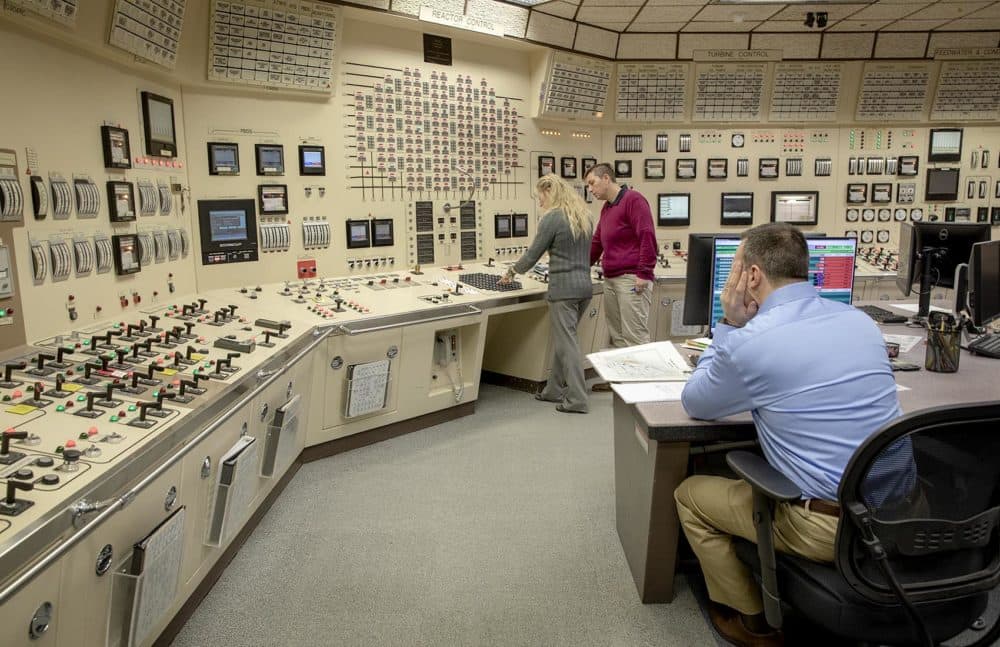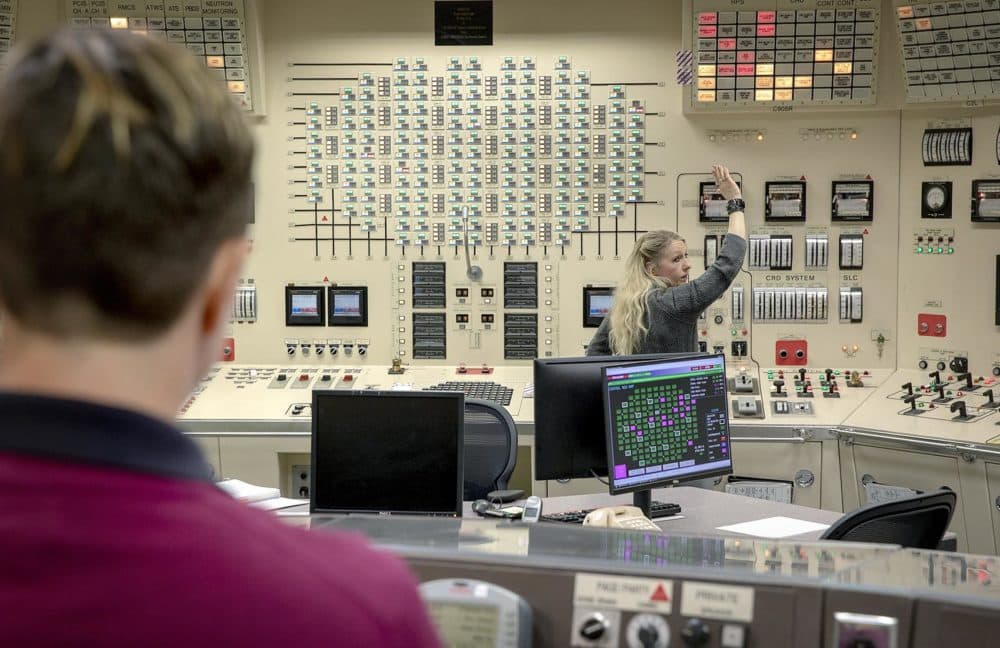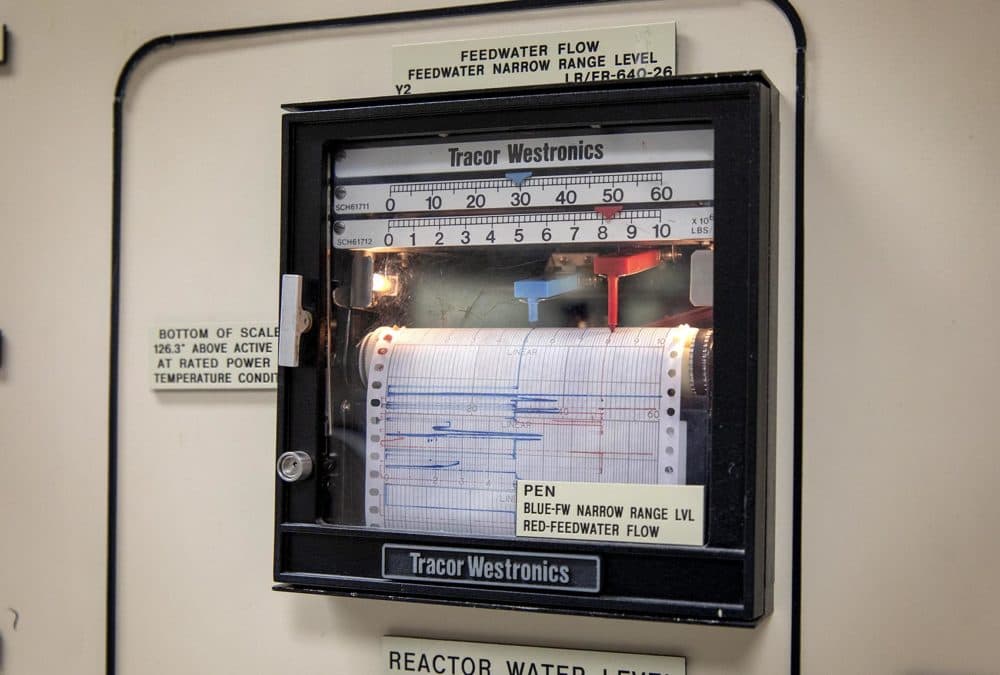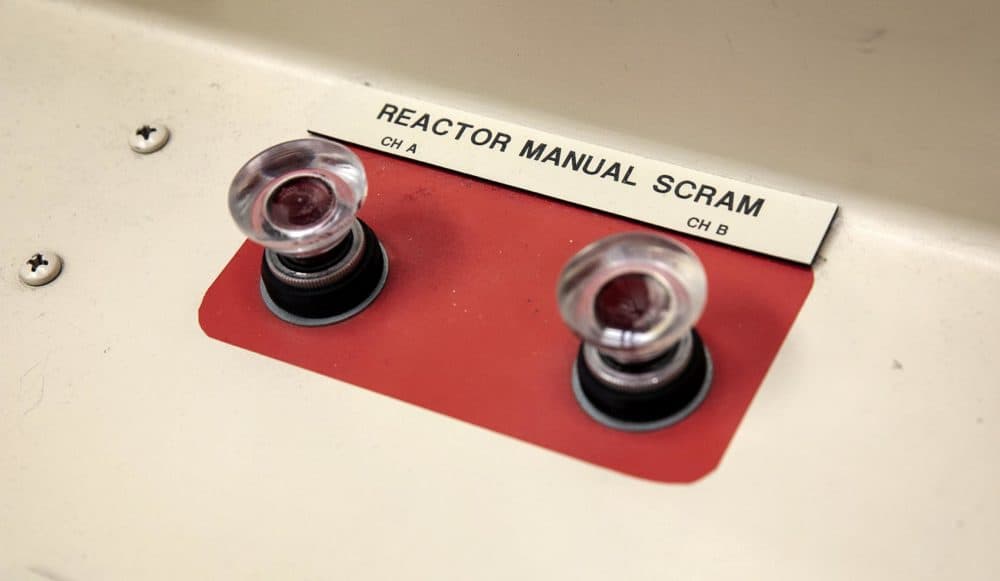Advertisement
Closing Pilgrim
In An Identical Simulator, Pilgrim Operators Prep For Shutdown

Five miles from the Pilgrim Nuclear Power Station, in a wooded, suburban neighborhood, in a nondescript office building, is a very unusual room. It looks a lot like the bridge of the Starship Enterprise from the original "Star Trek" TV series.
The room is a simulator — an identical twin mock-up of the control room at the Pilgrim nuclear power plant.
"It's exactly the same," says Christina Renaud, senior operations trainer at Entergy's Chiltonville Training Center. "The carpet tiles are the same colors, the ceiling tiles are the same. The garbage can locations, the printers, every computer screen is the same, every chair. Everything. When you are up here you might as well be at the plant."
For weeks, crews have been using the simulator to train for Friday, when the nuclear plant shuts down for good.
"We made a commitment to be cold shutdown May 31," Renaud says. "We're going to start earlier so if there's an equipment issue or something happens, we have time to respond and repair if necessary, and still meet our deadline."

Renaud works closely with colleague Karla Kristiansen, who has been an operations trainer at the simulator for the past decade. Before that, she was a senior reactor operator at Pilgrim, and worked her way up.
"I actually was cleaning toilets when I started working here and I said, 'I want to run this place,' " recalls Kristiansen. "So I put myself through school, got a degree in nuclear power technology while working here, and obtained a reactor operator's license. I love what we do, the core of what we do is really fascinating."
Not Just 'Pulling The Plug'
The Pilgrim simulator is a scene frozen in time — 1968 to be exact. That's the year construction began on the nuclear power plant.
There are flashing plastic buttons, hundreds of knobs, levers and dials. Ink pens record reactor pressure and temperature on revolving paper drums, offering familiar, comforting clicks to operator ears. But there are some modern digital touches — like the simulated sound of the reactor feed pumps that sit adjacent to the real main control room.

It takes at least eight people to power down Pilgrim's reactor to zero. They'll be operating from a detailed written schedule called a "Brief of Infrequently Performed Tasks," going through the precise series of events needed to bring Pilgrim's reactor to cold shutdown.
The military precision is one reason why Renaud bristles at the term "pulling the plug."
"When someone hears a 'pull the plug' they think it's that simple," she says. "It sounds too nonchalant, [but] that's not what happens. We don't do anything nonchalant."
'We Like Boring'
To power down, the reactor engineer will constantly monitor the core's temperature and pressure and relay data to the senior reactor operator, who stands on an elevated platform overlooking the scene.
The carefully choreographed chain of commands — following a strict three-way communication protocol — will lower 145 neutron-absorbing control rods into the core in a specific sequence, slowing the chain creation.
That's the way it's supposed to work. But reactor operators have also prepared for the worst: an emergency shutdown, or "scram." There have been at least 10 at Pilgrim over the past 45 years. The latest happened just two weeks before permanent shutdown, when a cooling water pump lost power. To practice for just such an event, Kristiansen grabs a key hanging on a panel, inserts it into a slot, turns it, and hits two kill switches on a red sign marked "Reactor Manual Scram."

It takes seconds to insert the control rods and scram the reactor, but the core is still very hot. The crew monitors and controls pressure and heat in the reactor vessel, using powerful pumps that can handle 4,000 gallons of water a minute.
Ops training instructor Kevin Murphy watches the action from the simulator's elevated control desk. He says 20% of the operators' time is spent in training, and they've told him that the real control room is "just like the simulator."
The regimented protocols may seem tedious and repetitive, but Renaud likes it that way.
"In nuclear power we like boring," says Renaud. "Our job is not to make power. Our job is to shut down the nuclear reactor if and when it's necessary to do so."
On Friday, it will be necessary to do so. Operators will slowly bring Pilgrim's reactor to zero power, and the plant's generator will be disconnected from the electric grid.
And Saturday, anti-nuclear activists, who fought to close the plant for decades, will celebrate the shutdown with a party they're calling "The Plug is Pulled on Pilgrim."
This segment aired on May 31, 2019.
